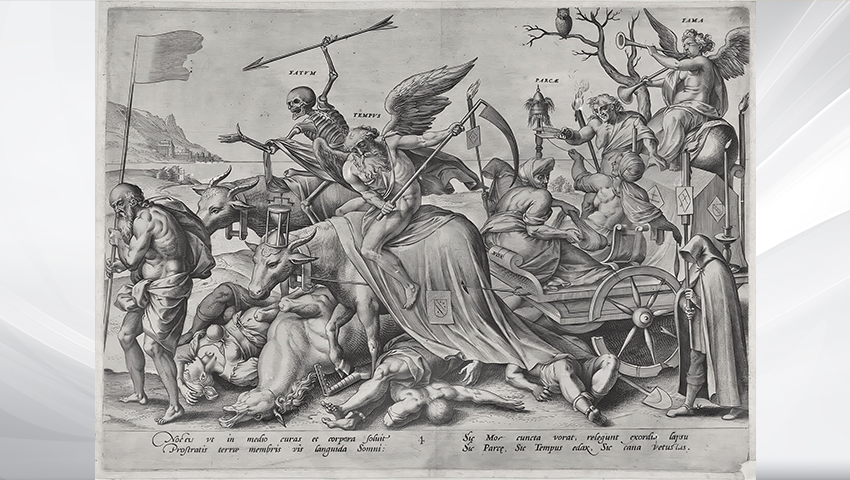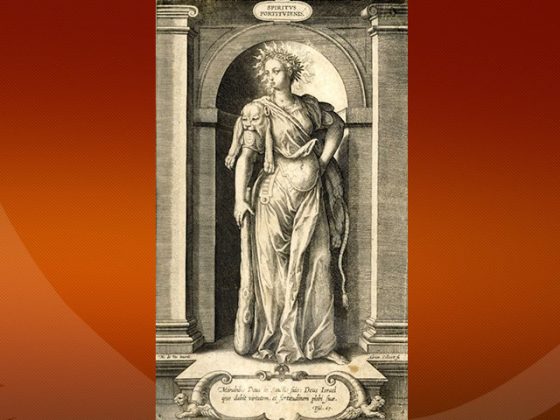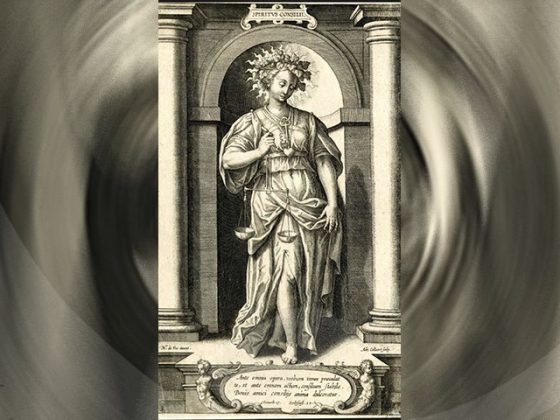Dearest friends:
I am very pleased to send you this other engraving by the artist Hieronymus Wierix which is part of the other three that make up “The Four Ages of Man”. On this occasion we will refer to…
…OLD AGE – NIGHT

Certainly, companions, our life is comparable to the hours of the day: at dawn we could say that we are in our childhood, when we are at midday ─zenith─ we could say that we have reached youth, when the afternoon begins we can compare that phenomenon with adulthood, our maturity, and when the night arrives we enter our old age.
That is what our artist deals with in this beautiful engraving which highlights the carriage of our life that begins to be torn or destroyed. It is possible that in the back of it we can see an old woman who with a pair of scissors is going to cut a thread that connects with another woman who works with a third one. Basically, this explains that, when our Bobbin Kandelnosts values have been exhausted, the Angels of Death cut the silver cord that unites our physical body with the astral body. That old woman, along with the other two, are the very Parcae [reapers] ─which is why this word is written in the plural: Parcae─ of the classics, who mark the end of our existence. Interesting here is that other woman ─another Parca─ who is acting as a spinner, because it is common knowledge, esoterically speaking, that death and life are connected: we die to be born again and we are born so as to then die.
An angel blows a trumpet at the back of the carriage to announce that a cycle has ended. Above it appears the word Fama to indicate that everything is over, while an owl contemplates it. The owl, in occultism, is always present both to point out to us the remembrance of ourselves and also the end of our journey since it is a nocturnal bird.
There are two characters dressed as monks who have their heads covered with a hood to hide their faces, one on the right of the carriage and the other on the left. Each of them carries, as a placard, an emblem or drawing that symbolizes the plane of life of each human being.
It should be noted that six flames are seen in the image: two that are carried by the monks on the sides of the carriage, two on the sides of the coffin and two others behind it on the carriage. This is the mystery of the Arcanum 6 of the Tarot. In such a case we are warned that death appears when we least expect it.
On one of the oxen we see Saturn with his sickle. Let us remember that Saturn symbolizes time, and that is the reason why we see above his head the Latin word Tempvs. It is very illustrative to see that, on the head of one of the oxen that pull the carriage, you can see an hourglass. This clock marks the beginning and the end of everything. Everything has its time. Let us recall the Latin phrase Tempvs irreparabilis fugit, ‘time passes irremediably’.
Finally, I add for you the Latin phrase that is written in the bottom part of the engraving:
«Noctis ut in medio curas et corpora soluit, prostratis terrae membris vis languida somni: Sic mor cuncta vorat, relegunt exordia lapsu. Sic Parcae, sic tempus edax, sic cana vetustas».
Translation: ‘As in the middle of the night the languid force of sleep dissolves worries and bodies with limbs prostrate on the ground, so death devours all things, so the Parcae, so voracious time, so gray old age rejects exordiums.’
Next to Saturn, on the other ox, we can perceive a skeletal figure. This figure reminds us that everything is reduced to nothing. Above this skeletal figure a word in Latin appears that tells us: Fatum, which is to be interpreted as ‘destiny’. Undoubtedly, each of us has his destiny indicated by the Lords of the Great Law, and sooner or later that destiny reaches us with its symbolic darts or arrows.
This is how the carriage of physical death advances, dear readers. It does not respect anyone or anything, and so we see people crushed by the carriage, or recumbent corpses of people who have died—men, women, etc., etc., etc.─. Including animals like the horse that appears dead near the corpses.
At the front an old man marches. That old man represents a Master of Wisdom who shows the harsh reality of the facts and that everything is reduced to vanities: Vanitas vanitatum et omnia vanitas, ‘vanity of vanities, everything is vanity’.
Finally I add a few sentences for your reflection:
“There are dead people who go up the more their coffin goes down.”
Manuel del Cabral
“An honorable death redeems a torpid life.”
Tacit
“Death is the strickle that makes us all equal.”
Pedro de Guzmán
“Only death confesses how weak man’s body is.”
Juvenal
“How can someone suddenly die who, from birth, sees that he is running through life and carries death with him?”
Antonio Machado
MORS CERTA, HORA INCERTA.
─‘Death is certain, but the hour is uncertain’─
KWEN KHAN KHU



